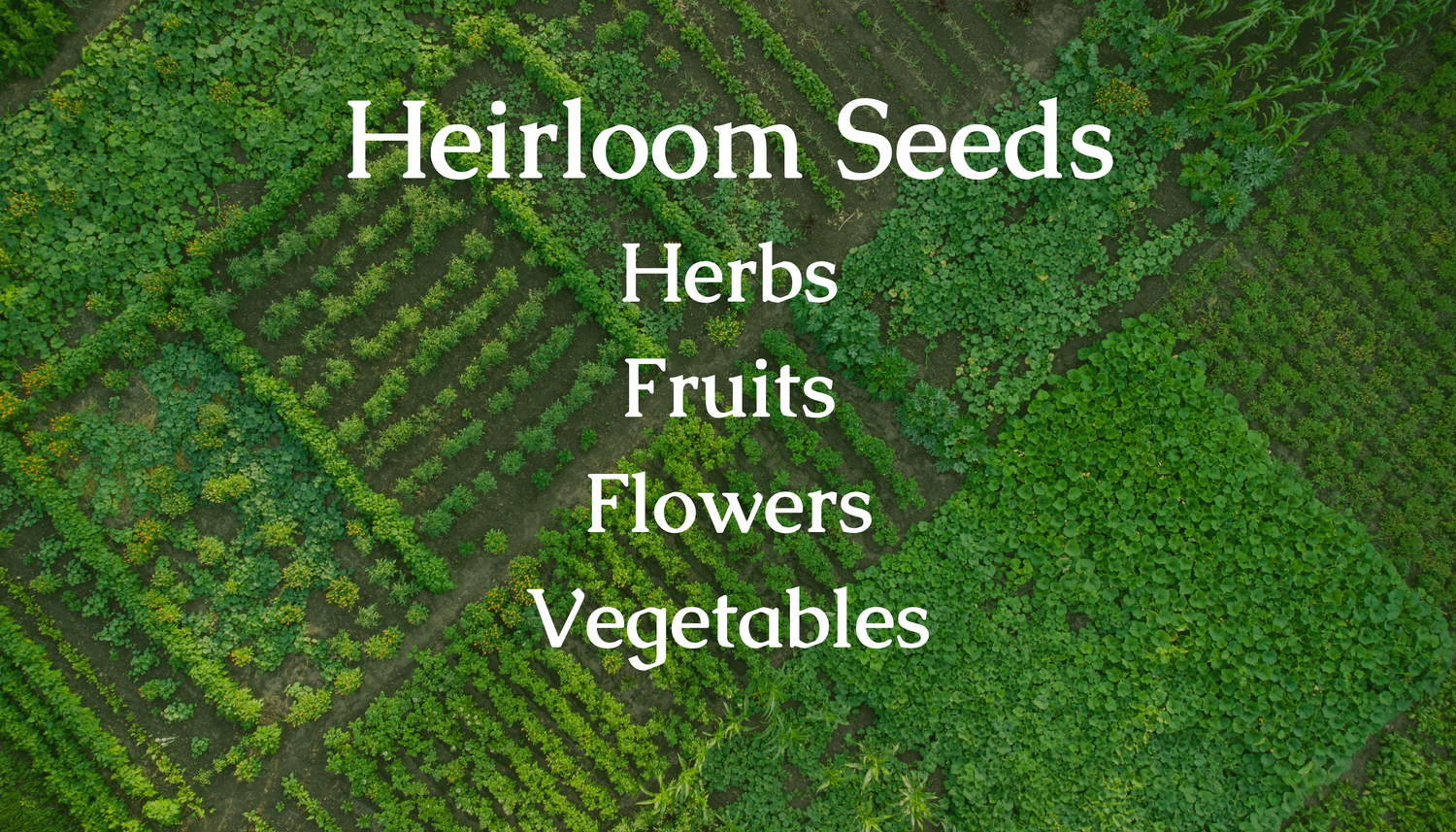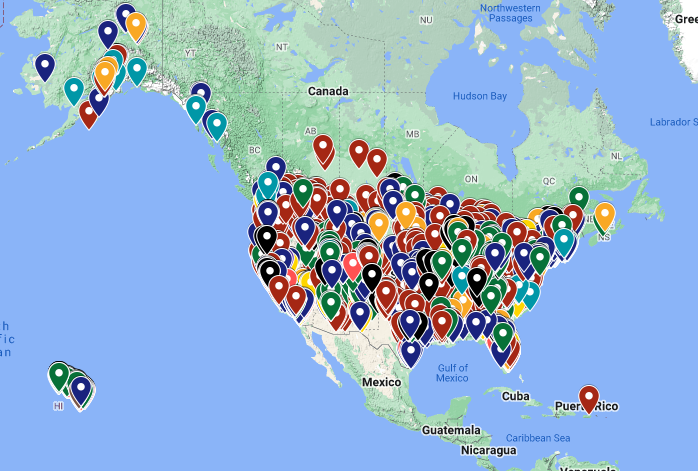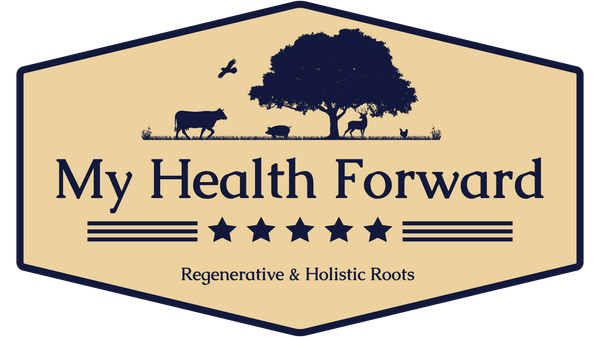How to spot bioengineered food at the grocery store.
To support my work and start growing your own organic food at home, checkout the 180 open-pollinated, non-gmo, and pesticide-free heirloom seeds that I grow, pack, and carry here on my site.
Bioengineered food ingredients will be disclosed in one of four ways.
As defined by the USDA’s agricultural marketing service (AMS), a "bioengineered food ingredient" disclosure means a food item contains genetic material that has been modified through lab techniques not attainable in nature.
Starting January 1st of 2022, food manufacturers are required to disclose when they used an ingredient from a crop that was genetically engineered by including one of the following four disclosures.

- The text disclosure reads “contains a bioengineered food ingredient”. This will be on the label or the produce box (e.g. corn). This is the most common disclosure.
- The symbol disclosure is the one you see here on the screen.
- The electronic disclosure must include a statement such as “scan here for more food information” and then link to a page with the disclosure.
- The text message disclosure must include the statement text [command word] to [number] for bioengineered food information.
Food companies have the option to voluntarily disclose if they use refined ingredients that come from a genetically engineered source under the 5% detectability threshold. This disclosure would be labeled as derived from bioengineering or ‘ingredients derived from a bioengineered source’ on the label.
While large food manufacturers must comply, foods sold or made in restaurants, food trucks, trains, airplanes, delis and other food establishments are not required to make the disclosure.
Bioengineered food ingredients come from genetically modified organism (gmo). Crops are usually genetically modified to make them more resistant to herbicides, control weeds, and protect from pests. Common bioengineered food ingredients according to the FDA include cornstarch, corn syrup, corn oil, soybean oil, canola oil, or granulated sugar. This is the full list of all the crops that can be genetically engineered:
- Alfalfa
- Arctic Apples
- Canola (95% of all canola)
- Corn (92% of all corn)
- Cotton (96% of all cotton)
- Eggplant
- Papaya
- Pineapple (pink flesh varieties)
- Potato
- Salmon
- Soybean (94% of all soybean)
- Squash (summer)
- Sugarbeet
- Sugarcane
Examples of popular foods with genetically engineered ingredients include:
- Doritos
- Cape Cod Jalapeno Chips
- Lucky Charms
- Impossible Foods
- Oreos
- Campbell’s Soup
- Honey Maid Graham Crackers
- Honey Nut Cheerios
The four ago-chemical giants Bayer-Monsanto, BASF, ChemChina, and Dow-Dupont control crop bioengineering, seed supply, and pesticide production.
The longstanding concern is that the FDA does not test whether genetically engineered crops are safe and also does not require independent pre-market safety review testing. The agro-chemical giants submit their own industry funded testing during their voluntary communications with the FDA. Bioengineered crops reduce biodiversity, guarantee synthetic pesticides are used, and threaten native and heirloom varieties.
The agro-chemical companies have also been poisoning Hawaii with geentic crop testing and pesticide use for decades. As of 2014, over 3,236 genetically modified field trials were conducted in Hawaii. A Center for Food Safety study reported that chem giants like Dow Dupont, BASF, Syngenta, and Bayer-Monsanto spray 17 times more restricted-use insecticides per acre in Kauai than on cornfields in the US mainland. The Hawaii CFS reports also show that from 2007 to 2012, DuPont-Pioneer sprayed fields on Kauai with 90 different chemical formulations containing 63 active ingredients. The company sprayed eight to sixteen times a day every two out of three days. Six out of the seven restricted-use pesticides still being used are suspected of being endocrine disruptors according to the EPA.
Here's an excerpt from the report, "Pesticide drift frequently sickens Hawai‘i’s schoolchildren, triggering nausea, vomiting, dizziness and difficulty breathing, among other symptoms, and in some cases necessitating decontamination showers, school evacuations and hospitalization. Children and adults in Waimea, Kaua‘i, downwind of DuPont-Pioneer fields, have been particularly hard hit by pesticide drift and “fugitive dust;” Kaua‘i physicians report “almost daily” respiratory complaints,
as well as nose bleeds and dermatitis; and they suspect pesticides as a possible cause of high cancer and birth defect rates."
You can file a complaint on the AMS website if you believe a food product with bioengineered ingredients doesn’t have a disclosure.
The easiest way to avoid GMOs is to buy organic, source local, and grow food yourself!

GMO Corn at Whole Foods. Taken on 8/17.

Browse My Heirloom Seeds
I carry over 180 varieties of heirloom seed packets that are open-pollinated, non-gmo, pesticide-free, and breed true to type. Growing your own produce provides you with continual access to healthy and nutritious food.
Let customers speak for us
from 346 reviewsThis is the only place I buy seeds. Terrific company.

Germinated right away and already growing fast!

After just a couple of days, my seeds for Summer squash are popping out of the dirt, healthy and green! I’m thrilled with all the seeds I have purchased from My Health Forward. They all are happily growing! I will definitely order again!!

Ive already got seeds sprouting indoors. I ordered a lot of seeds and my order was fullfilled perfectly. Thank you!

I trust My Health Forward for my seed purchased. 100%

Seeds sprouted in 5 days or less super exciting stuff impeccable service

Thank you for all the work that you do in providing access to heirloom seeds and upholding food sovereignty and sustainability practices :)

Cannot wait to purchase more seeds, I’m a horticulturist and I’ve been looking for someone to purchase heirloom seeds from, and I finally found the place! No damage to the packaging whatsoever the package was sealed tight and they love how the seeds were packed so cute! Can’t wait to start sowing my seeds!

I’m beyond impressed with My Health Forward’s Heirloom “Small Cherry Red Tomato” Seeds! Within just 6 days of planting indoors in containers, I already have vibrant little plants springing up. These seeds germinated so much faster than any standard seeds I’ve tried before.
I’m thrilled to see such promising growth and can’t wait to get these plants ready for the upcoming spring season. If you're looking for high-quality seeds that deliver quick and reliable results, these are a must-have for your garden. Highly recommend!

It's only been a few days and my seeds are already starting to sprout! I can't wait to taste these delicious lettuce heads!

Can't wait and see the results! The seeds look healthy and the package arrived in a short time

Ordering was easy and reasonably priced. Will order again.


Find Local Farms
Find farms near you using my map with over 6,800 local farms, ranches, markets, and stands across the country.



